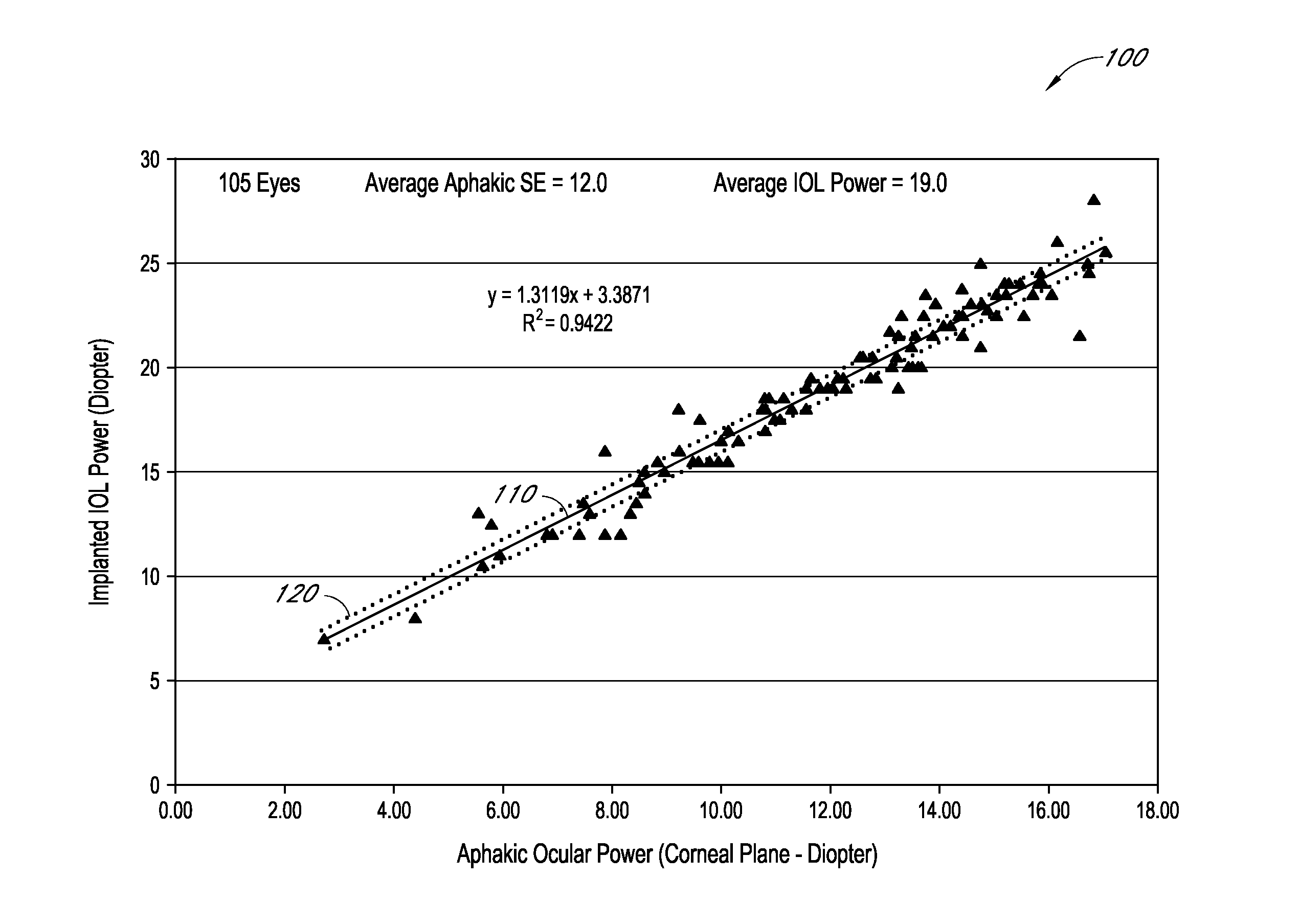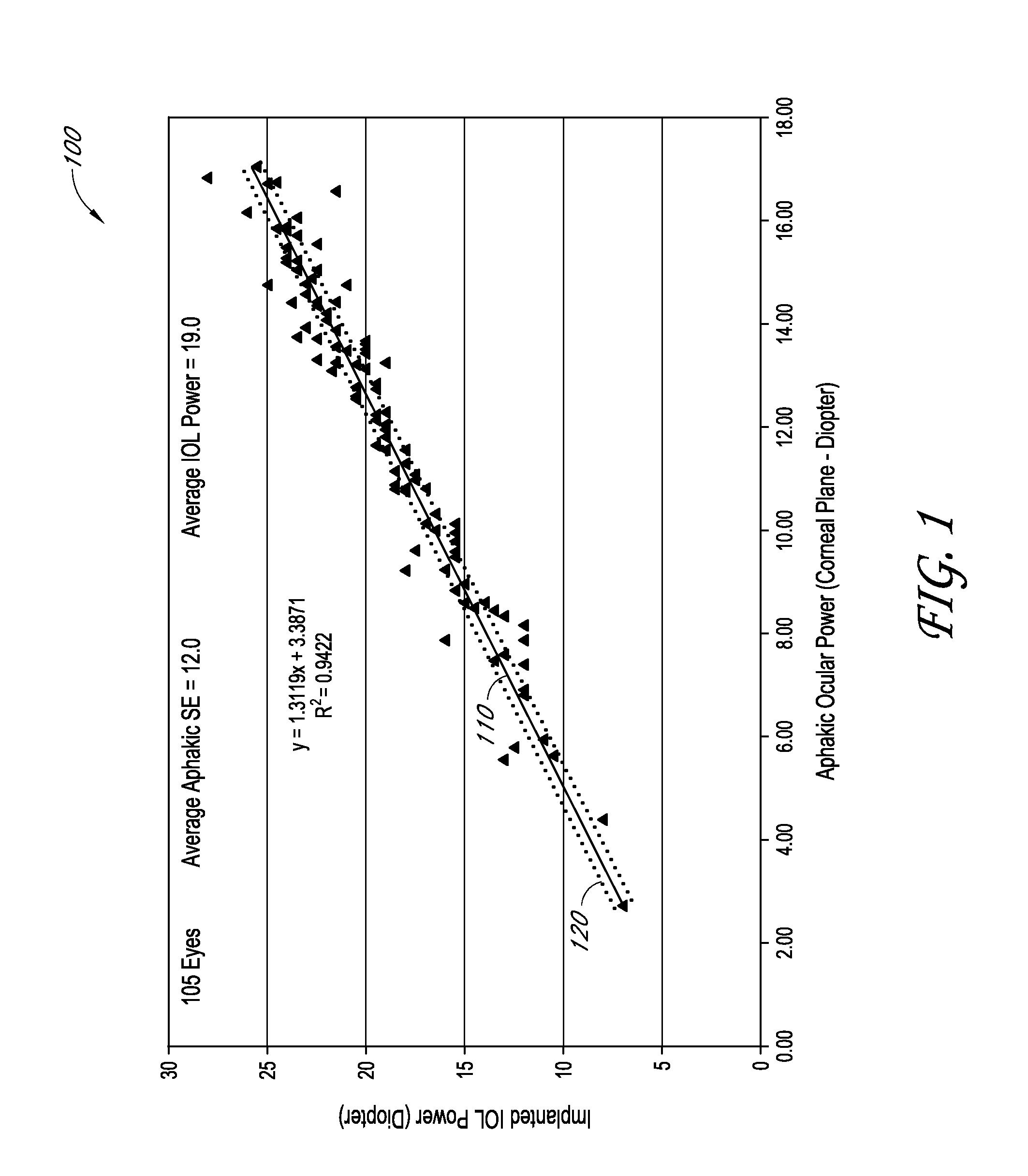Determination of the effective lens position of an intraocular lens using aphakic refractive power
- Summary
- Abstract
- Description
- Claims
- Application Information
AI Technical Summary
Benefits of technology
Problems solved by technology
Method used
Image
Examples
Embodiment Construction
a;
[0015]FIG. 5 is a plot of aphakic ocular power versus axial length;
[0016]FIG. 6 is a plot of aphakic ocular power versus corneal curvature;
[0017]FIG. 7 is a plot of three different types of estimated ELP versus axial length, the three different types of estimated ELP being the Holladay 1 formula, the SRK / T formula, and the Hoffer Q formula; and
[0018]FIG. 8 is a plot of estimated ELP versus aphakic ocular power for the sample group of eyes, the estimated ELP having been determined using the Hoffer Q formula and adjusted by reducing the effect of the manufacturer's constant for the IOL on the result.
DETAILED DESCRIPTION OF THE PREFERRED EMBODIMENT
[0019]In a typical cataract surgery, a surgeon removes the natural crystalline lens from a patient's eye and an intraocular lens (IOL) is implanted in its place. By selecting an IOL having an appropriate amount of spherical and / or cylindrical power, an eye that prior to the surgery was, for example, myopic (near sighted), hyperopic (far sig...
PUM
 Login to View More
Login to View More Abstract
Description
Claims
Application Information
 Login to View More
Login to View More - R&D
- Intellectual Property
- Life Sciences
- Materials
- Tech Scout
- Unparalleled Data Quality
- Higher Quality Content
- 60% Fewer Hallucinations
Browse by: Latest US Patents, China's latest patents, Technical Efficacy Thesaurus, Application Domain, Technology Topic, Popular Technical Reports.
© 2025 PatSnap. All rights reserved.Legal|Privacy policy|Modern Slavery Act Transparency Statement|Sitemap|About US| Contact US: help@patsnap.com



